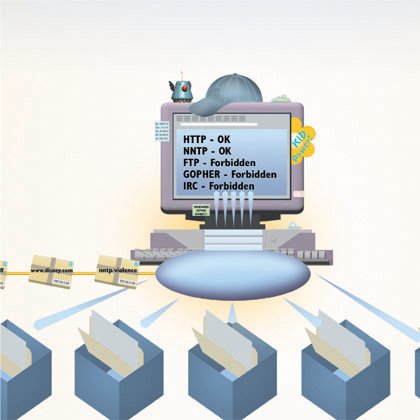Chapter 52. Parental Controls on the Internet
| The very nature of the Internetthe way it allows free, unfettered flow of information among peoplehas gotten it a lot of bad publicity. Much has been made of the fact that erotic and pornographic information is available on the Interneteverything from pictures to discussions about subjects many people find objectionable. The truth is that that kind of content makes up a very small part of what's available on the Internet, and the objectionable content is not exactly in public viewyou have to do a bit of digging to find it. However, just the fact that this type of information is available to anyone who wants to see it, including children, has made people uncomfortable. In fact, the U.S. Congress and other legislative bodies have tried to take steps to ban certain types of content from being available on the Internet, or to ban libraries and other public facilities from allowing access to certain material. As a result of these efforts, controversial laws have been passed against online pornography. The laws have then been overturned by the courts. For example, a law called the Communications Decency Act was ruled unconstitutional by the Supreme Court. The real answer to the problem, though, doesn't lie with legislation. The answer lies with technologysoftware that enables parents to ensure that their children are not seeing objectionable material. A number of companies make and sell software that will do this, such as SurfWatch, Net Nanny, and CyberPatrol. These companies check sites for content and then bar children from getting to those sites containing content that is unsuitable for them. Some routers used for home networks also include filtering capabilities built in to them. Online services such as America Online have a variety of ways to block access to objectionable material on the Internet. Some allow parents to block children from using services such as the World Wide Web, chat, or newsgroups completely. Others license technology from software makers, such as those that manufacture SurfWatch, to enable anyone on their service to block Internet sites they don't want their children to visit. One group working on the issue is Platform for Internet Content Selection (PICS), which is trying to give parents control over the type of material to which their children have access. The group is trying to develop industry standards for technology that would allow the content of all sites and documents on the Internet to be rated according to its suitability for children. Additionally, the group would create standards to enable software to be developed for blocking sites based on those suitability ratings. Businesses are also concerned with the type of Internet material their workers are accessing over corporate networks. Getting at and displaying sexual material can be interpreted as sexual harassment and can lead to serious legal ramifications. Additionally, most companies simply don't want their workers accessing that material on company time. Some companies now lease the same software parents are buying. Instead of installing the software on individual computers, though, the software is installed on a server, and it checks all incoming Internet traffic to every computer in the company. |
EAN: 2147483647
Pages: 223
